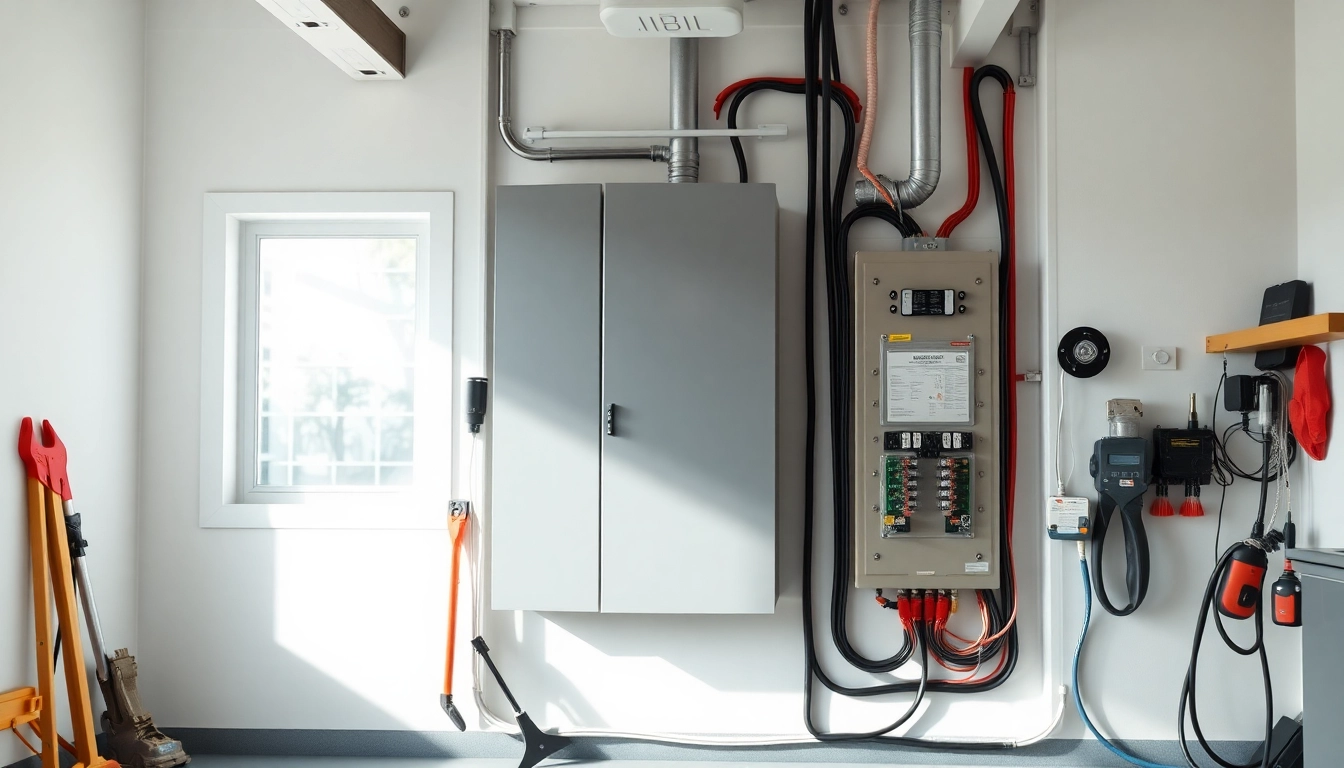Understanding the Importance of Your Electrical Panel
When thinking about home safety and electrical efficiency, the Electrical Panel plays an essential role. It serves as the central hub for distributing electricity throughout your home, yet many homeowners may not fully appreciate its importance until issues arise. This article aims to explore the significance of electrical panels, signals that you may need an upgrade, and how to choose the right panel to meet your home’s needs.
What is an Electrical Panel?
An electrical panel, commonly known as a breaker box or service panel, is a critical component of any electrical system. It distributes power from the utility company to various circuits in your home. This involves routing electricity through a series of circuit breakers, which protect each circuit and device from overloads. Understanding the function and structure of your panel is crucial for maintaining a safe and efficient electrical system.
Components of an Electrical Panel
Electrical panels consist of several key components:
- Main Breaker: This is the switch that controls the overall power to your home. It can be turned off to stop the electricity supply.
- Circuit Breakers: These devices protect individual circuits from overload by tripping and cutting the power when a fault is detected.
- Bus Bars: These metallic strips distribute electricity to the circuit breakers.
- Ground Bar: A safety feature that prevents electrical surges by grounding excess power safely into the earth.
Understanding these components allows homeowners to recognize potential issues or improvements that may be necessary for electrical performance.
How Electrical Panels Affect Home Safety
The electrical panel is crucial in maintaining home safety. It safeguards against electrical fires, equipment damage, and electric shocks by regulating power flow. For instance, a malfunctioning panel can lead to overheating, sparking, and, ultimately, potential fires. Homeowners should routinely inspect their panels for wear and tear, rust, or signs of overheating to ensure safety and compliance with local electrical codes.
Signs That Indicate Your Electrical Panel Needs an Upgrade
While electrical panels are built to last for many years, several indicators suggest it’s time for an upgrade. Recognizing these signs could significantly enhance your safety and home efficiency.
Increased Power Demands
In today’s world, the demand for electricity continues to rise. More devices and appliances in the home lead to increased consumption of power. If you’ve recently added new electrical devices, such as high-powered appliances, electrical vehicles, or home automation systems, your existing panel may struggle to cope. An overload can trip circuit breakers repeatedly and result in a fire hazard. Upgrading to a panel with a higher amperage rating, such as 200 amps, might be necessary for future-proofing your home.
Frequent Circuit Breaker Trips
If you often experience tripped circuit breakers, it’s a strong indication that your panel is overwhelmed. This could happen on high-usage days or with the running of multiple devices simultaneously. Continuous tripping is both annoying and dangerous; it indicates your panel might not be functioning adequately to meet your household’s power needs. If this has become a routine issue, it’s essential to assess your panel’s capacity and consider an upgrade.
Age of the Electrical Panel
The age of your electrical panel also plays a significant role in its effectiveness. Panels manufactured more than 20-30 years ago may not comply with modern safety standards and electrical demands. Outdated panels can be less reliable and may be lacking in essential safety features, making them candidates for replacement. New panels are often equipped with improved technology designed to enhance safety and efficiency, along with better compliance with current electrical codes.
Choosing the Right Electrical Panel for Your Home
When it comes to selecting a new electrical panel, you must consider several factors that align with your household’s needs.
Types of Electrical Panels Available
There are various types of electrical panels available for residential use:
- Standard Circuit Breaker Panels: Common in many homes, these panels are equipped with a series of circuit breakers that can be reset after tripping.
- Main Breaker Panels: These feature a main breaker switch that can disconnect the entire power supply, providing a convenient safety feature.
- Sub Panels: Used for larger homes or those with additional requirements, sub-panels allow for better distribution in your residence.
- Smart Panels: Newer technology allows for enhanced energy monitoring and control through smart devices, offering insights into energy usage.
Each type of panel serves particular functions and aims at meeting different power distribution needs.
Understanding Electrical Ratings
When choosing an electrical panel, it’s crucial to understand its amperage rating, typically ranging from 100 to 400 amps for residential use. A 200 amp panel is the most common for modern homes, providing ample power for a variety of appliances while allowing for future expansions. Assessing your electrical demand will help ensure that the panel you choose can not only meet your current needs but also accommodate any future expansions.
Cost Considerations for Upgrading
Cost is often a significant factor when considering an upgrade. Prices for electrical panels can vary widely based on the type and amperage as well as labor costs for installation. Homeowners should anticipate anywhere from $1,500 to $3,000 for a complete panel upgrade. While this is a considerable investment, the long-term savings on energy efficiency and the invaluable peace of mind regarding safety can outweigh these initial costs.
Steps to Upgrade Your Electrical Panel Safely
Upgrading your electrical panel is not a task to take lightly. It requires careful planning and professional assistance. Here’s a structured approach to safely upgrade your electrical panel.
Consulting with a Professional Electrician
Before making any changes to your electrical panel, it’s vital to consult a licensed electrician. They can assess your current electrical system, advise on necessary upgrades, and ensure that the new panel complies with local codes. Professional electricians can also identify issues that you may not have noticed which could affect the upgrade process, such as outdated wiring or grounding problems.
Permitting and Code Compliance
Most local jurisdictions require permits for electrical panel upgrades, as electrical work needs to adhere to strict safety codes. An experienced electrician will handle the permitting process, ensuring that everything is in compliance with national electrical standards as well as local regulations. Failure to obtain proper permits can result in fines, or worse, unsafe living conditions.
Preparing Your Home for Installation
Preparation is essential for a successful electrical panel upgrade. Ensure that the work area is clear and accessible to allow the electrician easy access to perform the installation. Depending on the scope, you might need to temporarily relocate appliances or turn off the power supply to certain circuits. Good communication with your electrician will ensure that the project runs smoothly without any surprises.
Maintenance Tips for Your New Electrical Panel
Regular Inspections and Testing
Schedule regular inspections with your electrician to ensure everything is functioning correctly. This can involve checking connections, assessing for signs of wear, and testing the function of breakers. Regular maintenance can help catch potential issues before they escalate into major problems.
Keeping Your Electrical System Updated
As technology continues to advance, updates and upgrades may be beneficial. Consider smart panels that provide better monitoring of usage patterns and efficiency. Keeping your panel updated ensures it can handle new appliances and devices safely.
Recognizing Signs of System Failure
Learn to recognize warning signs of system failure, such as flickering lights, buzzing sounds from the panel, or warm spots on the panel itself. Noting these signs promptly can help prevent the risk of electrical fires or severe damage.
In conclusion, understanding the critical role of your electrical panel can lead to informed decisions about upgrades and maintenance. Paying attention to the signs indicating an upgrade is necessary and becoming familiar with the components and functionalities can empower homeowners to ensure safety and efficiency in their electrical systems. By working with qualified professionals and embracing modern advancements, you can create a resilient and effective electrical setup that meets today’s demands.



